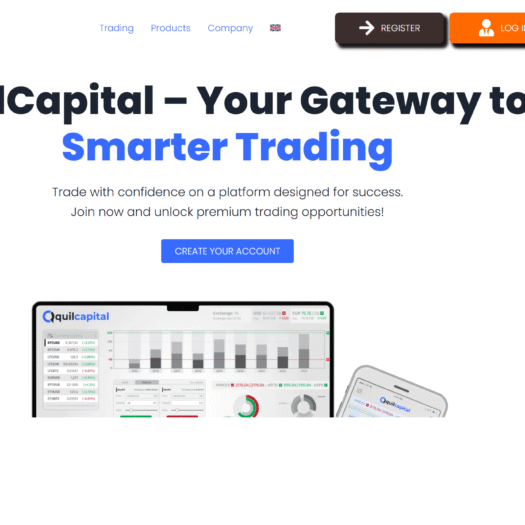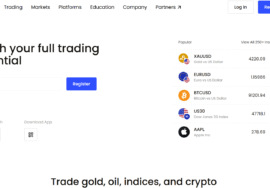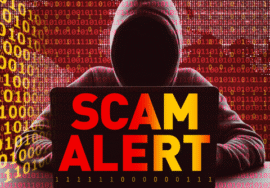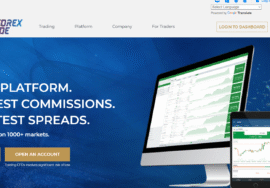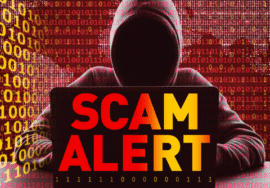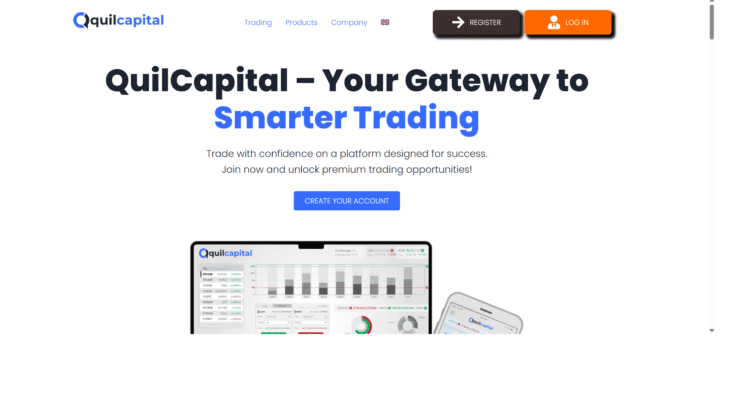
7 Reasons You Should Treat QuilCapital.com as High-Risk
7 Reasons You Should Treat QuilCapital.com as High-Risk
QuilCapital has been the subject of multiple regulator investor alerts across Canada and shows several technical and user-feedback warning signs. Below I list seven numbered reasons evidence-backed why you should be extremely cautious before sending money or personal data to this site.
1) Multiple official investor alerts from Canadian regulators
QuilCapital is on the Canadian Securities Administrators’ investor-alerts list and has been specifically warned about by provincial regulators (Saskatchewan’s FCAA, New Brunswick’s FCNB and the British Columbia Securities Commission). These are formal public cautions telling consumers the company is not registered to trade or advise in those jurisdictions a strong signal that the business is operating outside required licensing.
2) Impersonation / social-media endorsement scam linked to the brand
Regulators flagged QuilCapital in connection with an impersonation scam that used fake social posts and an image of a public figure to suggest endorsement. Impersonation and fake-endorsement campaigns are frequently used to create false legitimacy and drive deposit traffic. When a name shows up in that context, treat its promotions as suspect.
Report Now!
3) Low automated trust score and “exercise extreme caution” flags
ScamAdviser reports a very low trust score for quilcapital.com and explicitly recommends exercising extreme caution. Automated reputation tools look at WHOIS privacy, hosting, domain age and other signals — and QuilCapital ranks poorly on those checks. Low machine-score + regulator alerts = real red flag.
4) Repeated patterns reported by victims (withdrawal blocks, extra fees)
Consumer Q&As and complaint threads describe typical scam playbook behavior connected to QuilCapital: accounts that show “paper profits,” then withdrawal attempts are blocked or delayed while operators demand extra payments. These appear as fees described online in victims’ reports using terms like crypto deposit reclaim, bank reclaim fee, or ad-hoc “processing” or “tax” charges. Those demand patterns are classic signals of recovery-fee and withdrawal-manipulation scams.
5) Inconsistent third-party coverage from glowing reviews to warnings
Some promotional or review pieces present QuilCapital positively (marketing reviews claim advanced platforms and AI trading), but independent watchdogs and regulators show the opposite: multiple official alerts and low trust engine scores. When promotional content and official regulator data conflict, assume the regulator data is more reliable.
6) Young / opaque domain footprint + masked ownership
Where a site hides WHOIS data, uses privacy services, or was registered recently, it becomes harder to trace operators or pursue legal action. QuilCapital’s technical footprint (domain registration and masking) is consistent with many sites that later re-brand or vanish once complaints mount. ScamAdviser’s scan highlights these technical gaps.
7) Elevated risk of post-loss “recovery” scams
Once a platform is flagged by regulators, victims commonly get approached by third-party recovery outfits that promise to get money back — for an upfront fee. Regulators and consumer advisors repeatedly warn that these are often scams themselves. QuilCapital’s regulator status plus reported withdrawal issues make “recovery scam warning” highly relevant here.
How QuilCapital’s red flags map to real-world tactics
- Slick marketing or fake endorsements attract deposits. (Seen via impersonation scam activity.)
- Small deposits may show “paper gains.” (Common in many reported cases.)
- Withdrawal triggers new, unexpected demands: crypto reclaim, bank/wire reclaim, or processing fees. (Victim reports.)
- Victim seeks help → targeted by “recovery” services that demand more money. (Regulator advice.)
Practical checklist — what to do if you’ve been involved
- Stop sending any more funds immediately.
- Do not pay any “reclaim” or “unlock” fee (crypto deposit reclaim / bank reclaim fee / wire transfer reclaim). Paying more rarely helps and usually deepens loss.
- Document everything: screenshots, transaction IDs, emails, chat logs.
- Contact your bank/card provider or crypto exchange to request chargebacks or trace the funds (fast action helps).
- Report to your national regulator and to the provincial Canadian bodies that posted alerts (links below).
- Avoid third-party “recovery” services unless they are regulated, have verifiable track records, and you have independent legal advice.
Key evidence sources (most load-bearing)
- Canadian Securities Administrators — QuilCapital investor alerts.
- FCAA Saskatchewan investor alert
- FCNB New Brunswick caution.
- ScamAdviser: quilcapital.com trust score (low).
- BCSC (British Columbia) Investment Caution list.
conclusion – Why QuilCapital.com is too risky to trust
QuilCapital.com has moved from the “suspicious” box into the “regulated authorities say avoid it” box. Multiple official warnings from Canadian provincial regulators — Saskatchewan, New Brunswick and British Columbia — and placement on the Canadian Securities Administrators’ investor alerts list are not small matters. Regulators issue public alerts after seeing patterns of complaints or evidence suggesting that an entity is operating without required registration or is otherwise likely to harm investors. Those public statements should be treated as the most authoritative signal you can get short of formal enforcement actions.
Technically, QuilCapital’s online presence also raises alarms. Automated reputation engines like ScamAdviser give the site a very low trust score, highlighting problems such as masked WHOIS information, recent domain activity, and low independent traffic. Those are not definitive proof of fraud on their own, but when combined with regulator warnings and victim reports, they form a consistent picture: lack of transparency, evasive ownership, and a high probability that funds will be difficult to recover.
The operational pattern reported around QuilCapital mirrors countless other online investment scams. Victims deposit funds and sometimes see initial “profits” (often simulated), which entice them to add more. When they attempt to withdraw actual funds, the operator imposes ad-hoc fees framed as compliance charges, taxes, or “reclaim” fees for crypto or bank transfers. These fees might be labeled crypto deposit reclaim, wire transfer reclaim, or bank reclaim fee. Each demand is an escalation designed to trap the victim into paying more, and often the cycle continues: pay more, get promised release, then see another demand. That’s the finance-fraud playbook.
Another dangerous postscript is recovery-scam exposure. Once a platform is publicly flagged and victims talk, shady “recovery” firms show up promising to recoup losses — for an upfront fee. Regulators repeatedly warn against these — they are often part of the fraud ecosystem. QuilCapital’s public caution status makes it especially likely that recovering victims will be targeted.
So what’s the practical takeaway? If you haven’t engaged with QuilCapital: don’t. If you have deposited money, stop further payments immediately and gather every piece of evidence you can. Contact your bank, card issuer, or crypto exchange straight away — many chargeback or tracing options are time-sensitive. File a complaint with your local financial regulator and with the Canadian provincial authorities that have already posted warnings (links above). And resist the emotional urge to “pay one more fee” in hope of release — that is the behavior the scammers count on.
QuilCapital is an active red-flag case. Between official investor alerts, low technical trust scores, impersonation-style marketing, and victim narratives of reclaim/withdrawal schemes, the reasonable conclusion is that QuilCapital.com is too risky to trust your funds or personal data with. Treat any contact from the site (or affiliates) with extreme skepticism, and prioritize blocking, reporting, and recovery via official channels rather than paying more into the scheme.
